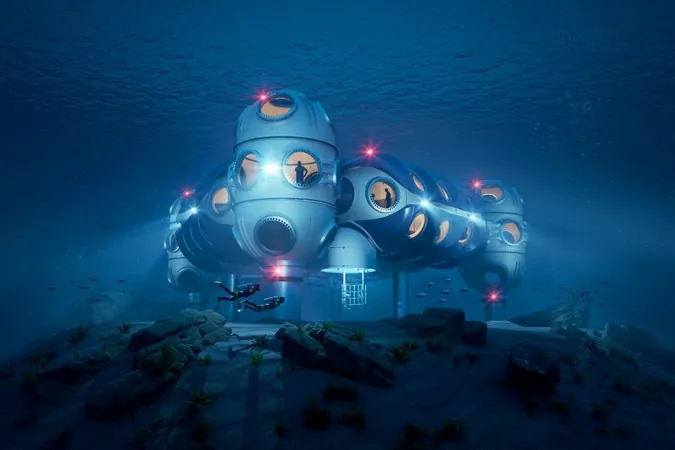
Could Humans Claim the Ocean Floor as New Frontiers?
2025-06-15
Author: Li
As the quest for new habitats intensifies—whether to counter environmental crises or venture into the unknown—the ocean depths have emerged as a tantalizing frontier. While Mars and the Moon may dominate headlines, our own oceans present a largely unexplored challenge that's capturing the attention of adventurers and scientists alike.
This concept isn’t new; pioneers like French oceanographer Jacques Cousteau have been pushing the boundaries of underwater living since the 1960s. More recently, NASA has utilized the Aquarius Reef Base in Florida, a submerged facility where researchers can live for up to two weeks, conducting vital scientific studies.
The Challenges of Underwater Living
Humans, with our reliance on oxygen and sunlight, are not naturally suited for life underwater. Our bodies face significant challenges with pressure and the absence of natural light. Yet, history shows we can adapt; astronauts aboard the International Space Station (ISS) have lived in similarly harsh conditions without permanent detriment. Notably, cosmonaut Valeri Polyakov holds the record for enduring 437 days in space.
However, long stints in space can lead to health issues such as weakened bones and muscle loss. So, what about life in underwater habitats?
Pioneering Underwater Experiments
German aerospace engineer Rudiger Koch spent an astonishing 120 days submerged in a habitat in the Caribbean, reporting no health problems upon his ascent, celebrating his return with a toast. Similarly, Professor Joseph Dituri lived in a Florida lagoon for 100 days, emerging with surprisingly positive health outcomes, including enhanced cognitive abilities and reduced biological age.
Deep's Ambitious Ocean Plans
Despite these successes, knowledge about sustained underwater living remains limited. Enter Deep, a UK-based ocean exploration firm aiming to breakthrough these barriers. They plan to establish a permanent underwater presence by 2027, currently testing habitats in a repurposed flooded quarry in Gloucestershire.
Deep is developing two primary structures: the Vanguard—a compact module for short stays—and the Sentinel, a substantial habitat designed to house researchers for up to 28 days at increased depths. The mantra is simple: Explore and understand the capabilities of living under the sea.
Navigating the Dangers of the Deep
However, diving to greater depths carries serious risks, primarily decompression sickness, commonly known as "the bends." To combat this, researchers will utilize a saturated diving technique, allowing them to acclimatize to submerged pressures. Dr. Dawn Kernagis of Deep elaborates that saturation tanks facilitate prolonged underwater stays, shifting the conventional diving windows from mere hours to extended periods.
By closely studying researchers' physical and psychological responses during these missions, Deep aims to lay the groundwork for longer underwater habitation. Perhaps, in the future, we may see an era where humans could flourish in a world reminiscent of a modern Atlantis.
A New Era Awaits?
With technology evolving and our understanding of underwater living expanding, the prospect of a human presence beneath the waves appears more plausible than ever. Who knows? Soon, we might find ourselves calling the ocean floor home.



 Brasil (PT)
Brasil (PT)
 Canada (EN)
Canada (EN)
 Chile (ES)
Chile (ES)
 Česko (CS)
Česko (CS)
 대한민국 (KO)
대한민국 (KO)
 España (ES)
España (ES)
 France (FR)
France (FR)
 Hong Kong (EN)
Hong Kong (EN)
 Italia (IT)
Italia (IT)
 日本 (JA)
日本 (JA)
 Magyarország (HU)
Magyarország (HU)
 Norge (NO)
Norge (NO)
 Polska (PL)
Polska (PL)
 Schweiz (DE)
Schweiz (DE)
 Singapore (EN)
Singapore (EN)
 Sverige (SV)
Sverige (SV)
 Suomi (FI)
Suomi (FI)
 Türkiye (TR)
Türkiye (TR)
 الإمارات العربية المتحدة (AR)
الإمارات العربية المتحدة (AR)